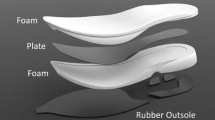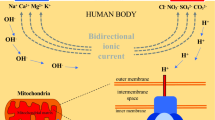Abstract
To maximize the competitive ability of cyclist, many researches have been studied how to fit the setting of bicycle components against cyclist’s physical properties. At present, neither definitive policy nor effective method to set bicycle components appropriate for each cyclist have been established, so this study aims to develop a system that can assist to search an efficient setting of bicycle components for cyclist’s physical properties. The first feature of this system is to change the bicycle setting during pedaling exercise, and the second is to make the exercise data obtained by experiments sharable with researchers in the study field of cycling. The proposed system is developed by improving our previous experimental device and newly constructing an analysis software program with web-based data management function. The experimental device can automatically control the positions of both a saddle and a handle during pedaling exercise and measure multi-channel surface electromyography (SEMG) simultaneously. The analysis software program is constructed with Microsoft SQL Server to efficiently manage the huge volume of SEMG data, and additionally, web server technologies, Apache and PHP, are employed in order to be available through the Internet, so researchers can easily use all experimental data even if they live in different locations. The details of our experimental system are shown in this paper, and the summary of our findings through the experiments is also described.





Similar content being viewed by others
References
Gonzalez H, Hull ML (1989) Multivariable optimization of cycling biomechanics. J Biomech 22:1151–1161
Holmes J, Pruitt A, Whalen N (1994) Lower extremity overuse in bicycling. Clin Sports Med 13(1):187–203
Peveler W, Pounders J, Bishop P (2007) Effect of saddle height on anaerobic power production in cycling. J Strength Conditioning Res 21(4):1023–1027
Hug F, Dorel S (2009) Electromyographic analysis of pedaling: a review. Journal of Electromyogr Kinesiol 19(2):182–198
Chapman A, Vicenzino B, Blanch P, Hodges P (2008) Patterns of leg muscle recruitment vary between novice and highly trained cyclists. J Sci Med Sport 11:519–526
Raymond C, Joseph K, Gabriel Y (2005) Muscle recruitment pattern in cycling: a review. Phys Therapy Sport 6:89–96
Gamez J, Zarzoso M, Raventos A, Valero M et al (2008) Determination of the optimal saddle height for leisure cycling. Eng sports 7:255–260
Yoshihuku Y, Herzog W (1990) Optimal design parameter of the bicycle-rider system for maximal muscle power output. J Biomech 23:1069–1079
Chapman A, Vicenzino B, Blanch P, Hodges P (2008) Patterns of leg muscle recruitment vary between novice and highly trained cyclists. J Electromyogr Kinesiol 18(3):359–371
Chapman A, Vicenzino B, Blanch P, Hodges P (2009) Do differences in muscle recruitment between novice and elite cyclists reflect different movement patterns or less skilled muscle recruitment? J Sci Med Sport 12(1):31–34
Lucia A, Hoyos J, Chicharro J (2001) Preferred pedaling cadence in professional cycling. Med Sci Sports Exerc 33(8):1361–1366
Faria I (1984) Applied physiology of cycling. Sports Med 1:187–204
T. Tokuyasu, S. Matsumoto, S. Kushizaki and T. Kitawaki (2013), Development of automatic positioning system for bicycle saddle based on lower limb’s EMG signals during pedaling motion, Proc. of 2013 IEEE 6th International Workshop on Computational Intelligence and Applications, pp 27–32.
Tokuyasu T, Matsumoto S (2013) Development of saddle height control system for cycle road racer based on SEMG signals of the leg muscles. J Biomech Sci Eng 8(1):94–103
Acknowledgments
This work was partly supported by the Grant-in-Aid for Young Scientists (B-24700688), and The Ministry of Education, Culture, Sports, Science and Technology, Japan.
Author information
Authors and Affiliations
Corresponding author
About this article
Cite this article
Tokuyasu, T., Matsumoto, S., Kushizaki, S. et al. Development of Racing Bicycle Position Control Device and Pedaling Exercise Analysis Software with Web-Based Data Management Function for Improving Cycling Technique. Artif Life Robotics 19, 244–250 (2014). https://doi.org/10.1007/s10015-014-0165-x
Received:
Accepted:
Published:
Issue Date:
DOI: https://doi.org/10.1007/s10015-014-0165-x




